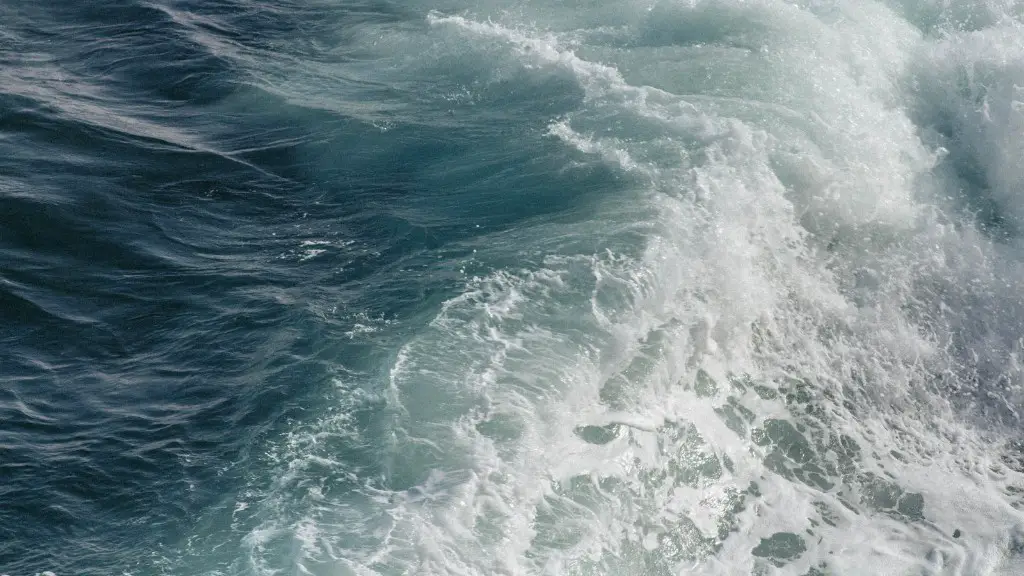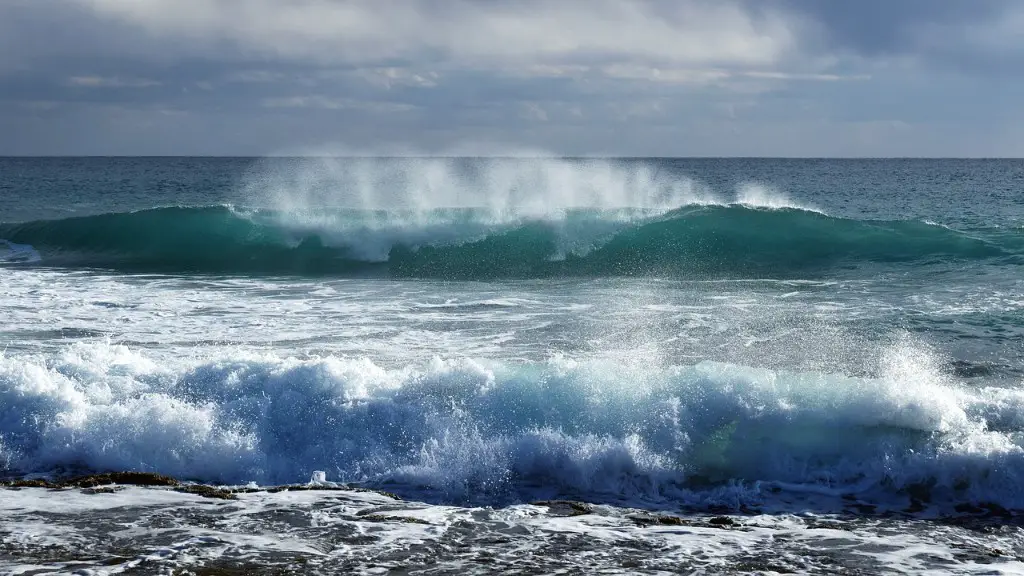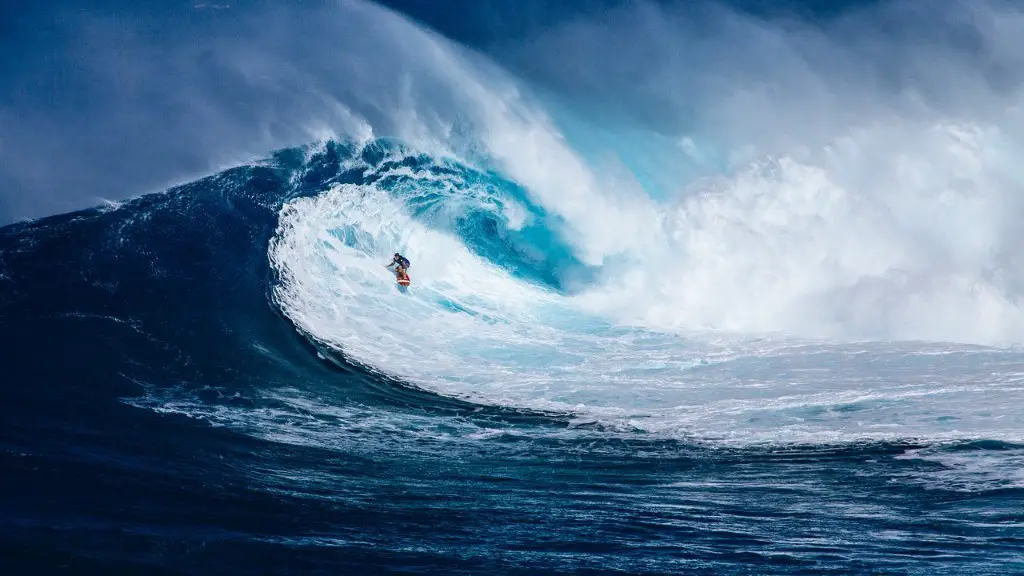The South China Sea has recently been making waves due to a number of contentious issues occurring throughout the region. This is the largest marginal sea of the Pacific Ocean, located to the east of the Malay Peninsula and Vietnam, to the southwest of China, and to the south of Hong Kong, Taiwan and the Philippines. This area has seen a surge of both small and large-scale activity, making it an important region to consider. In this article, we’ll explore what’s happening in the South China Sea, with the potential risks and rewards available to be had.
The South China Sea holds nine dash line, which had been a contentious issue for many years, claiming some of the waters as Chinese territory. This incident of a marine boundary between China and other neighbouring countries has been under debate, and in total six countries have overlapping claims. It has been argued by a number of academics that this matter has caused many difficulties in the area, and even more recently has been called ‘the most dangerous place in the world’ due to its volatile nature.
In 2016, the Permanent Court of Arbitration at the International Court of Justice concluded that the majority of the claims were in breach of the international law, however China still insists on their right to the territory. This has led to a great degree of tension in the area, with all countries in the region trading threats, increasing military presence and every now and again leading to an open conflict.
Earlier this year the situation has taken a different turn. Indonesia, China, Vietnam and the Philippines agreed to open the South China Sea for oil and gas exploration. This deal could serve as a strategic win-win agreement, as it gives China and its neighbouring countries access to resources which lie in the seabed of the South China Sea, and can provide a much needed economic boost. It is stated that this could potentially be a ‘game changing moment’ for underground resources, enabling a more peaceful resolution between the conflicting sides to develop in the future.
Although this agreement may present some opportunities for the future, some experts have argued that this does not necessarily mean it will act as a peaceful solution in the long run. This is largely due to the fact the ruling handed down by the Court of Arbitration still stands, and so the conflicting parties may yet engage in further maritime disputes in the future.
The promise of economic growth however, has sparked some interest among some of the parties involved, and it has been stated by some experts that this exploration opens up the possibilities of joint ventures or cooperative agreements. However, this is yet to be seen, and with the global economic downturn in progress, this cooperation is still on shaky ground.
Moreover, another concern raised is that this exploration could potentially have a major environmental impact. For years, the South China Sea has been a key habitat for marine mating, with the local species under threat from human activity. This is an issue that any economic exploration must resolve, as well as the often delicate balance amongst the local fisheries and other tools of trade.
Military Activity
As mentioned earlier, tensions in the South China Sea have been escalating with reports of increased military build ups and brinksmanship between the parties in the past couple of years. The main countries in the region such as China, the Philippines and Vietnam have all increased their naval and shore-based military presence in the area, with China as of late being the main concern. It’s been said by some analysts that the main goal of the Chinese government is to seal off the South China Sea, solidifying its claim over the sea lanes, giving them domination of the waters which is estimated to represent an estimated 10th of global fishing catches, and more than 50% of its oil and gas reserves.
This is something that global powers have started to pay attention to, as the United States has been conducting freedom of navigation movements in the area, a move seen as a strong assertion of their position that the sea must remain open and be accessible to all. Couples with this, are regular joint exercises, most often involving the US and other like- minded countries, aimed to promote peace and stability in the area. The United Kingdom and Japan have also expressed their interest in joining such exercises, providing essential support and helping to keep the sea lanes open.
Despite, this the region remains on unstable ground, and with sea clashes taking place every now and then between the countries and their multiple factions, the risk of retaliatory action and open conflict is still looming large.
Diplomatic Resolution
With the level of development in the region, as well as increased military presence, finding a diplomatic resolution has been difficult. As was mentioned earlier, the Permanent Court of Arbitration has already ruled against China in their claims to the nine dash line, and yet there is still no concrete result. This is a testament to the highly volitile nature of this region, and one hopes a diplomatic resolution can be found.
In July of this year the European Union announced their plan to host a meeting between the respective countries in the South China Sea and the ASEAN countries. The goal of this summit is to find a ‘rules-based agreement’ that can serve to de-escalate the tensions in the region and prevent further conflict.
The US has also aimed to at least reduce the number of naval vessels and force concentrations in the region, particularly in places where the two sides have come into direct contact, such as near the Spratly Islands. Here, they have suggested both sides reduce their military presence and take a more pragmatic approach to the situation, utilizing diplomacy and dialogue.
The future of the South China Sea is still far from certain, but with the EU summit pushing for a resolution, as well as the US stepping in to help find a common ground between the two sides, tensions may be abating in the near future.
Economic Benefits Outweigh Concerns?
The debate surrounding the opening of the South China Sea for exploration has been quite controversial, with many experts claiming that the economic benefits of this move could outweigh the environmental and social repercussions of such exploration.
The economic advantages of such ventures are estimated to be around $213 billion in total, with the potential for further growth and development for the countries of the region. As was mentioned earlier, this could also bring a sense of unity, as the agreement would enable multiple countries to benefit from the oil and gas in the seabed, and could signify a newfound economic independence in the area.
On the other hand, this could also be a double edge sword. As the governments invest in private companies to drill the resources, these firms may not be so bothered about the environment, as long as they maximize their profits. It is thus essential that should an agreement be made, regulations and standards should be put in place to create a safe operational environment to make sure that the ecosystems of the region aren’t damaged as a result.
Furthermore, this agreement could also raise further human rights issues. Reports show that many of the fishing communities of the region will suffer as a result of this move, as the activity in the sea will change the delicate balance in the ecosystem. This is something that any economic cooperation must take into account, and must provide a reasonable compensation for the affected population.
Concern for Marine Life
When the exploration of the South China Sea was first announced, many groups spoke out against it, citing the potential risks on marine life in the area. As it was mentioned earlier, the South China Sea is a very important habitat for a wide range of species, and their well-being could be at risk if their home is destroyed as a result of exploration.
Since then, there have been more restrictions in place to ensure that no irreversible damage is done to the marine life of the South China Sea. This includes the ‘no-go zones’ for sensitive species, monitoring systems for the safety of divers, and strict limitations on the method of extraction used.
Despite this, there is still a level of uncertainty about the safety of the sea animals, and the number of incidents regarding their health has led to some environmental groups to come out in protest. This has made it even more pressured for the governments of the region to abide by the preventive regulations they have put in place, as they need to show that they are looking out for the best interests of their neighbours.
Treaty or Pact
With the level of tensions in the South China Sea, some stakeholders have voiced the need of a treaty or pact between the respective countries to ensure that the country and its inhabitants remain protected and prosperous.
The idea of a treaty is to set up frameworks of mutual understanding and cooperation between the states that border the South China Sea. It would put in place standards and regulations that should be met by all countries in the region, thus creating a unified voice for the stakeholders and a more inclusive environment for negotiation and cooperation.
While the idea of such a treaty has been discussed by diplomats and other stakeholders, there are still many disagreements, as countries such as China have been reluctant to sign it due to the ambiguous nature of their claims. Nevertheless, talks are still continuing in order to find a diplomatic resolution that all countries can agree on, and the treaty, if formed, would be a major milestone in the diplomatic process for the South China Sea.
Conclusion
Overall, what’s happening in the South China Sea is a complicated affair, with multiple stakeholders and conflicting interests. While certain progress has been made in terms of diplomatic resolution, open conflict still seems to be a part of today’s reality in the region.
The opening up of the South China Sea for oil and gas exploration could bring a much needed economic boost to the area, however, care needs to be taken in order to ensure the environment is kept safe and the local species aren’t at risk of extinction. Similarly, the idea of a treaty has been proposed to commonise standards and regulations, creating a more unified platform for negotiations.
At the moment however, the South China Sea remains a highly contested region, and the situation there is ever evolving. We can only hope for a peaceful resolution in the near future, keeping the people and the environment safe.





